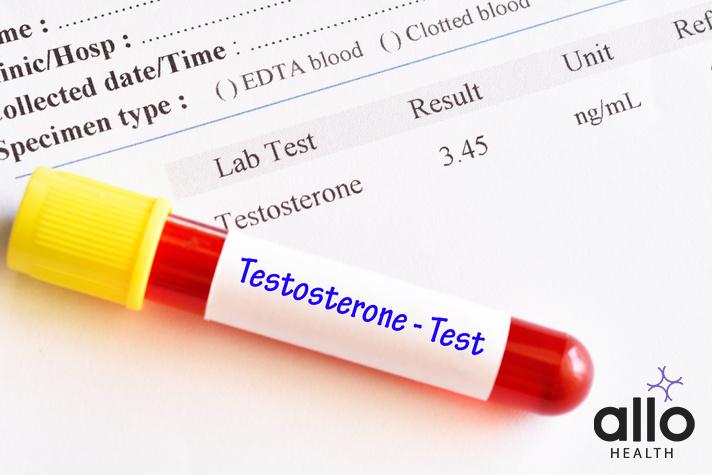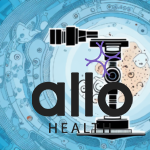Can Low Testosterone Be Diagnosed With ICD 10 Codes?

Allo Health is dedicated to personalized well-being, offering support and trusted information tailored to individual health goals. The platform emphasizes human-generated content, led by a distinguished medical team of experts, including physicians and sexual health specialists. Their commitment to credibility involves rigorous fact-checking, authoritative research, and continuous updates to ensure accurate, up-to-date information. Allo Health's unique approach goes beyond conventional platforms, providing expert-led insights and a continuous commitment to excellence, with user feedback playing a crucial role in shaping the platform's authoritative voice.

Welcome to my profile! I’m Dr Simran Shamanur, a dedicated and compassionate certified Sexologist with over 5 years of learning and experience in this field. I have treated over 1000 patients by helping them lead healthier, happier and more fulfilling lives by addressing their sexual health concerns. My approach is one of empathy, confidentiality and the right treatment for sexual concerns. I understand that discussing sexual health concerns can be sensitive and challenging. I provide a safe, non-judgemental and confidential environment where you can openly express your concerns and questions. Together, we will work to find personalised solutions to your specific needs.
Why This Was Upated?
Our experts continually monitor the health and wellness space, and we update our articles when new information became available.
Updated on 26 December, 2023
- Article was updated as part of our commitment to diversity, equity, and inclusion.

"The following blog article provides general information and insights on various topics. However, it is important to note that the information presented is not intended as professional advice in any specific field or area. The content of this blog is for general educational and informational purposes only.
Book consultation
The content should not be interpreted as endorsement, recommendation, or guarantee of any product, service, or information mentioned. Readers are solely responsible for the decisions and actions they take based on the information provided in this blog. It is essential to exercise individual judgment, critical thinking, and personal responsibility when applying or implementing any information or suggestions discussed in the blog."
Are you feeling tired, irritable, and lacking in energy? Do you have a decreased sex drive or have difficulty getting or maintaining an erection? If you are experiencing any of these symptoms, you may have low testosterone. Testosterone is an important hormone for men, responsible for a variety of essential functions such as muscle growth, bone density, and sperm production.
What is Testosterone?
Testosterone is a naturally occurring hormone belonging to the class of androgens, which are steroid hormones that primarily influence the development and maintenance of male sexual characteristics. It plays a crucial role in the body’s overall functioning and is found in both men and women, although it is present in significantly higher amounts in men.
Function and Production
- Sexual Development: Testosterone is responsible for the development of male reproductive organs during fetal development. During puberty, it promotes the growth of facial and body hair, deepening of the voice, and an increase in muscle mass.
- Sperm Production: Testosterone stimulates the production of sperm in the testes, ensuring male fertility.
- Muscle and Bone Mass: Testosterone contributes to the growth and maintenance of muscle and bone mass, making it essential for overall strength and bone health.
- Red Blood Cell Production: It aids in the production of red blood cells, which are crucial for oxygen transportation in the body.
- Libido and Sexual Function: Testosterone plays a significant role in regulating sex drive and maintaining sexual function in both men and women.
Testosterone is primarily produced in the testes in men and in smaller quantities in the ovaries and adrenal glands in women. The production is regulated by a feedback system involving the hypothalamus and the pituitary gland in the brain.
Regulation
- Hypothalamus: The hypothalamus releases gonadotropin-releasing hormone (GnRH) in response to low testosterone levels. GnRH signals the pituitary gland to release two key hormones: luteinizing hormone (LH) and follicle-stimulating hormone (FSH).
- Pituitary Gland: LH stimulates the Leydig cells in the testes (or ovarian cells in women) to produce testosterone.
- Negative Feedback Loop: When testosterone levels rise to a certain level, they send inhibitory signals back to the hypothalamus and pituitary gland to reduce the release of GnRH, LH, and FSH, ultimately slowing down testosterone production.
Physiological Effects
The effects of testosterone in the body are extensive, including:
- Physical Characteristics: Deep voice, facial and body hair growth, increased muscle mass, and broadening of shoulders.
- Sexual Characteristics: Development of male sexual organs, increased libido, and maintenance of reproductive health.
- Cognitive Function: Some research suggests that testosterone may influence cognitive abilities, including spatial reasoning and memory.
- Mood Regulation: Testosterone can impact mood and energy levels, and low levels have been associated with feelings of fatigue and irritability.
- Bone Density: It contributes to the maintenance of bone density and strength.
Imbalance and Health Implications
Both high and low testosterone levels can lead to health concerns:
- Low Testosterone (Hypogonadism): This condition can result in reduced muscle mass, decreased libido, erectile dysfunction, fatigue, mood changes, and decreased bone density.
- High Testosterone (Hyperandrogenism): Excessive testosterone levels in women can cause irregular menstrual cycles, excessive facial and body hair growth (hirsutism), and acne. Excessive high testosterone in males could cause increased acne, aggression, headaches, low sperm count leading to infertility, insomnia, etc.
- Hormonal Disorders: Imbalances in testosterone levels can result from various conditions, including polycystic ovary syndrome (PCOS) in women and testicular disorders in men.
To diagnose testosterone-related concerns, a doctor may perform blood tests to measure testosterone levels and assess symptoms to determine appropriate treatments, which may include hormone replacement therapy or other medical interventions. It is essential to work with a healthcare professional when dealing with testosterone-related concerns, as self-medication or misuse can lead to adverse effects on health.
Causes of Low Testosterone
Low testosterone, also known as hypogonadism, occurs when the body does not produce enough testosterone. There are two main types of hypogonadism: primary and secondary. Primary hypogonadism originates from the testicles themselves, while secondary hypogonadism is due to a concern with the pituitary gland or hypothalamus, which are responsible for regulating testosterone production. Let’s explore the various causes of low testosterone in detail:
- Age: As men age, testosterone levels naturally decline. This condition is known as late-onset hypogonadism or age-related hypogonadism. It is a normal part of the aging process and generally occurs after the age of 40.
- Testicular Disorders (Primary Hypogonadism):
- Klinefelter syndrome: A genetic condition in which a male is born with an extra X chromosome (XXY instead of XY), leading to underdeveloped testes and reduced testosterone production.
- Undescended testicles (cryptorchidism): When one or both testicles fail to descend from the abdomen into the scrotum before birth, it can affect testosterone production.
- Testicular injury or trauma: Physical injury to the testes can disrupt testosterone production.
- Testicular cancer or its treatment: Cancerous growths or treatments like radiation and chemotherapy can damage the testicles and affect testosterone production.
- Orchitis: Inflammation of the testicles, often due to infection (e.g., mumps), can impair testosterone production.
- Hypothalamic or Pituitary Disorders (Secondary Hypogonadism):
- Hypothalamic dysfunction: Conditions like Kallmann syndrome or other congenital abnormalities can lead to insufficient secretion of gonadotropin-releasing hormone (GnRH), which is responsible for stimulating the pituitary gland to produce luteinizing hormone (LH) and follicle-stimulating hormone (FSH).
- Pituitary tumors or tumors near the pituitary gland: These growths can interfere with the release of LH and FSH, thereby affecting testosterone production.
- Pituitary gland damage: Trauma, surgery, or radiation to the brain can damage the pituitary gland and disrupt hormone production.
- Chronic Illnesses:
- Chronic kidney disease: Impaired kidney function can disrupt hormone regulation, including testosterone production.
- Liver disease: Liver dysfunction can interfere with the metabolism and clearance of hormones, affecting testosterone levels.
- Obesity: Excess body fat can lead to hormonal imbalances and reduce testosterone production.
- Type 2 diabetes: Poorly controlled diabetes may contribute to low testosterone levels.
- Medications and Drugs: Certain medications and substances can suppress testosterone production:
- Opioids: Long-term use of opioids can lead to hypogonadism.
- Glucocorticoids: High doses of corticosteroids can affect hormone production.
- Chemotherapy: Some cancer treatments can damage the testes and reduce testosterone production.
- Anabolic steroids: Abuse of anabolic steroids can lead to hormonal imbalances and testicular shrinkage.
- Anti-androgens: These medications, used to treat conditions like prostate cancer, can block testosterone’s action.
- Congenital Disorders: Some individuals are born with genetic conditions that cause low testosterone levels, such as congenital hypogonadotropic hypogonadism (CHH).
- Stress: Chronic stress can impact hormone levels, including testosterone.
Symptoms of Low Testosterone
Low testosterone, or hypogonadism, can present with various symptoms. It’s important to note that the severity and combination of symptoms can vary from person to person. Some symptoms may be subtle and easily overlooked, while others can significantly impact a person’s quality of life. Here are the symptoms of low testosterone in detail:
- Low Libido: One of the hallmark symptoms of low testosterone is a reduced or diminished sex drive. Men with low testosterone may experience a decreased interest in sexual activity and may find it more challenging to become aroused.
- Erectile Dysfunction: Testosterone plays a crucial role in the process of achieving and maintaining an erection. Men with low testosterone may have difficulty achieving or sustaining erections firm enough for sexual activity.
- Fatigue and Reduced Energy Levels: Low testosterone can lead to feelings of persistent fatigue, decreased energy levels, and a general sense of low motivation or enthusiasm.
- Loss of Muscle Mass: Testosterone is involved in the development and maintenance of muscle mass. Men with low testosterone may notice a decrease in muscle bulk and strength.
- Increased Body Fat: Low testosterone can contribute to an increase in body fat, particularly in the abdominal area. This can lead to a less lean and more “flabby” physique.
- Decreased Bone Density: Testosterone helps maintain bone density, and low levels of this hormone can lead to weakened bones and an increased risk of osteoporosis.
- Changes in Mood: Some men with low testosterone may experience mood changes, including feelings of irritability, sadness, or depression.
- Reduced Body Hair Growth: Testosterone is responsible for the development of body hair, so low levels may result in decreased hair growth on the face and body.
- Hot Flashes: Some men with low testosterone may experience hot flashes similar to those seen in menopausal women. These sudden sensations of warmth can be accompanied by sweating.
- Decreased Testicle Size: In cases of primary hypogonadism, where the concern originates in the testicles, the testicles may become smaller.
- Gynecomastia: Low testosterone levels can disrupt the balance between testosterone and estrogen in the body, potentially leading to the development of breast tissue in men, a condition known as gynecomastia.
- Sleep Disturbances: Low testosterone levels can contribute to sleep disturbances, such as insomnia or disrupted sleep patterns.
Some of these symptoms may also be caused by other medical conditions, medications, or lifestyle factors. Therefore, if a person experiences any of these symptoms, they should seek medical evaluation from a healthcare professional.
A diagnosis of low testosterone is typically confirmed through blood tests measuring testosterone levels. If low testosterone is diagnosed, treatment options may include testosterone replacement therapy, lifestyle changes, or addressing any underlying medical conditions contributing to the issue.
As with any health concern, it’s crucial to work with a qualified healthcare provider for proper evaluation and management.
Diagnosis of Low Testosterone
Diagnosing low testosterone, also known as hypogonadism, involves a comprehensive evaluation by a healthcare professional. The diagnosis process typically includes a combination of medical history, physical examination, and laboratory tests. Here’s a detailed overview of the steps involved in diagnosing low testosterone:
- Medical History: The healthcare provider will begin by taking a detailed medical history, which includes asking about symptoms, their onset, duration, and severity. They will also inquire about any underlying medical conditions, past surgeries, medications, family history, and lifestyle factors that might contribute to hormonal imbalances.
- Physical Examination: A physical examination is conducted to assess general health and to look for any signs of low testosterone, such as changes in body composition, reduced body hair, or changes in the testicles (size, texture, etc.).
- Symptom Assessment: The healthcare provider will assess the presence and severity of symptoms commonly associated with low testosterone, such as low libido, erectile dysfunction, fatigue, mood changes, and muscle loss.
- Blood Tests: Blood tests are essential for confirming the diagnosis of low testosterone. The most common blood test is a total testosterone test, which measures the overall amount of testosterone in the bloodstream. This test is usually done in the morning when testosterone levels are at their peak.
- Free Testosterone Test: In some cases, a free testosterone test may be ordered. Unlike total testosterone, free testosterone is the portion of testosterone that is not bound to proteins in the blood and is considered the biologically active form. Free testosterone levels are typically lower than total testosterone levels but are more reflective of the hormone’s actual availability for use by the body.
- Additional Hormonal Tests: Depending on the suspected cause of low testosterone, the healthcare provider may also order tests to assess other hormones involved in the hormonal feedback loop, such as luteinizing hormone (LH) and follicle-stimulating hormone (FSH). These hormones play a role in regulating testosterone production.
- Imaging Studies: In certain cases, imaging studies, such as ultrasound or MRI, may be performed to examine the testes or the pituitary gland to identify structural abnormalities or tumors.
- Diagnosis of Primary or Secondary Hypogonadism: Based on the blood tests and medical evaluation, the healthcare provider will determine whether the hypogonadism is primary (testicular dysfunction) or secondary (resulting from a concern with the pituitary gland or hypothalamus).
- Underlying Cause Identification: The healthcare provider may investigate the potential underlying causes of low testosterone, such as genetic disorders, chronic illnesses, medication use, or lifestyle factors.
- Follow-Up and Monitoring: If low testosterone is diagnosed, the healthcare provider will discuss treatment options, potential risks, and benefits. They may also recommend regular follow-up visits to monitor treatment progress and adjust the treatment plan if needed.
Diagnosing low testosterone is a complex process, and the interpretation of test results requires expertise in hormone regulation. Therefore, it is crucial to consult a qualified healthcare professional for accurate diagnosis and appropriate management. Testosterone replacement therapy may be recommended in cases of confirmed hypogonadism to address the symptoms and improve overall well-being.
ICD-10 Diagnosis Codes for Low Testosterone
In the International Classification of Diseases, 10th Revision (ICD-10), the diagnosis codes for low testosterone, or hypogonadism, are categorized under “Endocrine, nutritional, and metabolic diseases” (Chapter IV). Specifically, the codes fall under the subcategory “Endocrine disorders” (E00-E89) and can be further specified based on the underlying cause and type of hypogonadism. Below are some of the relevant ICD-10 diagnosis codes for low testosterone:
- E23.0 – Hypopituitarism: This code is used when hypogonadism is due to dysfunction of the pituitary gland, which is responsible for secreting luteinizing hormone (LH) and follicle-stimulating hormone (FSH), both of which play a role in testosterone production.
- E29.1 – Testicular hypofunction: This code is used when low testosterone levels are a result of primary testicular dysfunction, also known as primary hypogonadism. It indicates that the testes are not producing enough testosterone.
- E89.5 – Postprocedural hypopituitarism: This code is used when hypogonadism develops following a medical procedure or surgery that affects the pituitary gland’s function.
- N46 – Male infertility: While not specifically indicating low testosterone, this code is sometimes used when hypogonadism leads to infertility as a result of reduced sperm production.
- N50.8 – Other specified disorders of male genital organs: This code may be used when hypogonadism is associated with other disorders of the male genital system.
The choice of the appropriate ICD-10 code depends on the specific details of the patient’s condition, including the underlying cause of low testosterone and the presence of any related complications or associated symptoms. Accurate coding requires a comprehensive assessment and diagnosis by a qualified healthcare professional.
There may be other codes that healthcare providers may use to specify the cause of hypogonadism or to address any complications or comorbidities associated with the condition. Therefore, the codes provided here are a starting point and should not be considered an exhaustive list. If you have concerns about low testosterone or any medical condition, it is best to consult with a healthcare professional for a proper evaluation and diagnosis. They can determine the most appropriate ICD-10 code based on the patient’s specific situation.
Frequently Asked Questions
(1) What is the ICD-10 code for primary hypogonadism (low testosterone due to testicular dysfunction)?
The ICD-10 code for primary hypogonadism, also known as testicular hypofunction, is E29.1. This code is used to identify cases where the testes are not producing enough testosterone, leading to low testosterone levels.
(2) What is the ICD-10 code for secondary hypogonadism (low testosterone due to pituitary dysfunction)?
The ICD-10 code for secondary hypogonadism caused by dysfunction of the pituitary gland is E23.0. This code is used when the pituitary gland fails to secrete adequate amounts of luteinizing hormone (LH) and follicle-stimulating hormone (FSH), which are essential for testosterone production.
(3) Is there an ICD-10 code for hypogonadism resulting from medical procedures or surgeries affecting the pituitary gland?
Yes, the ICD-10 code for postprocedural hypopituitarism is E89.5. This code is used when hypogonadism develops as a result of medical interventions or surgeries that impact the function of the pituitary gland.
(4) What is the ICD-10 code for male infertility caused by low testosterone?
While not specific to low testosterone, N46 is the ICD-10 code used for male infertility. This code may be applicable when hypogonadism leads to infertility due to reduced sperm production.
(5) Are there any other ICD-10 codes related to low testosterone?
Yes, there are additional ICD-10 codes that healthcare providers may use based on the specific details of the patient’s condition. For instance, N50.8 is used for other specified disorders of male genital organs, which may include hypogonadism with other related concerns.
(6) Can low testosterone be coded under general endocrine disorders in ICD-10?
Yes, low testosterone can be coded under “Endocrine, nutritional, and metabolic diseases” in ICD-10. The appropriate codes for low testosterone are found under the subcategories E00-E89, specifically E29.1 for primary testicular hypofunction and E23.0 for pituitary dysfunction-related hypogonadism.
(7) What ICD-10 code should be used if low testosterone is a result of chronic kidney disease?
If low testosterone is due to chronic kidney disease, the appropriate ICD-10 code is related to the kidney condition itself. The low testosterone would be considered a manifestation of the underlying chronic kidney disease, and the appropriate kidney-related code would be used (e.g., N18.x for chronic kidney disease).
(8) Are there specific ICD-10 codes for low testosterone in females?
ICD-10 codes related to low testosterone primarily focus on male hypogonadism. In females, low testosterone may be coded using more general endocrine disorder codes, such as E23.0 for pituitary dysfunction, if the cause of low testosterone is related to concerns with the pituitary gland.
(9) Can medications causing low testosterone be coded using ICD-10?
ICD-10 codes are primarily used to identify medical diagnoses and conditions rather than the direct cause of the condition. If a medication is causing low testosterone, the underlying condition or symptoms resulting from low testosterone may be coded using relevant ICD-10 codes.
(10) Is there an ICD-10 code for androgen deprivation therapy (ADT) used in prostate cancer treatment?Androgen deprivation therapy, often used in prostate cancer treatment, is coded using a different set of ICD-10 procedure codes, not diagnosis codes. The specific procedure code for ADT administration would depend on the method and type of therapy given.






































